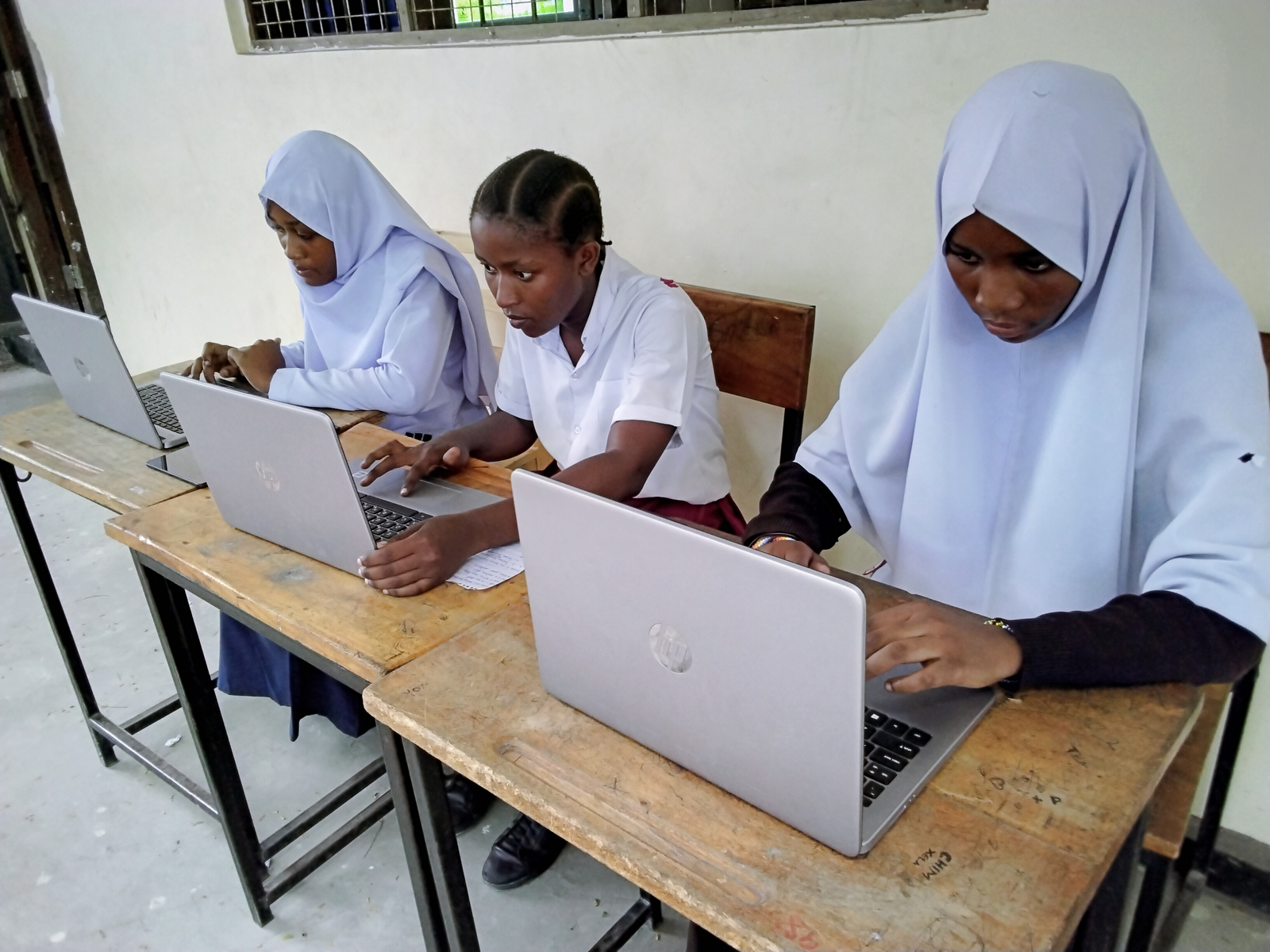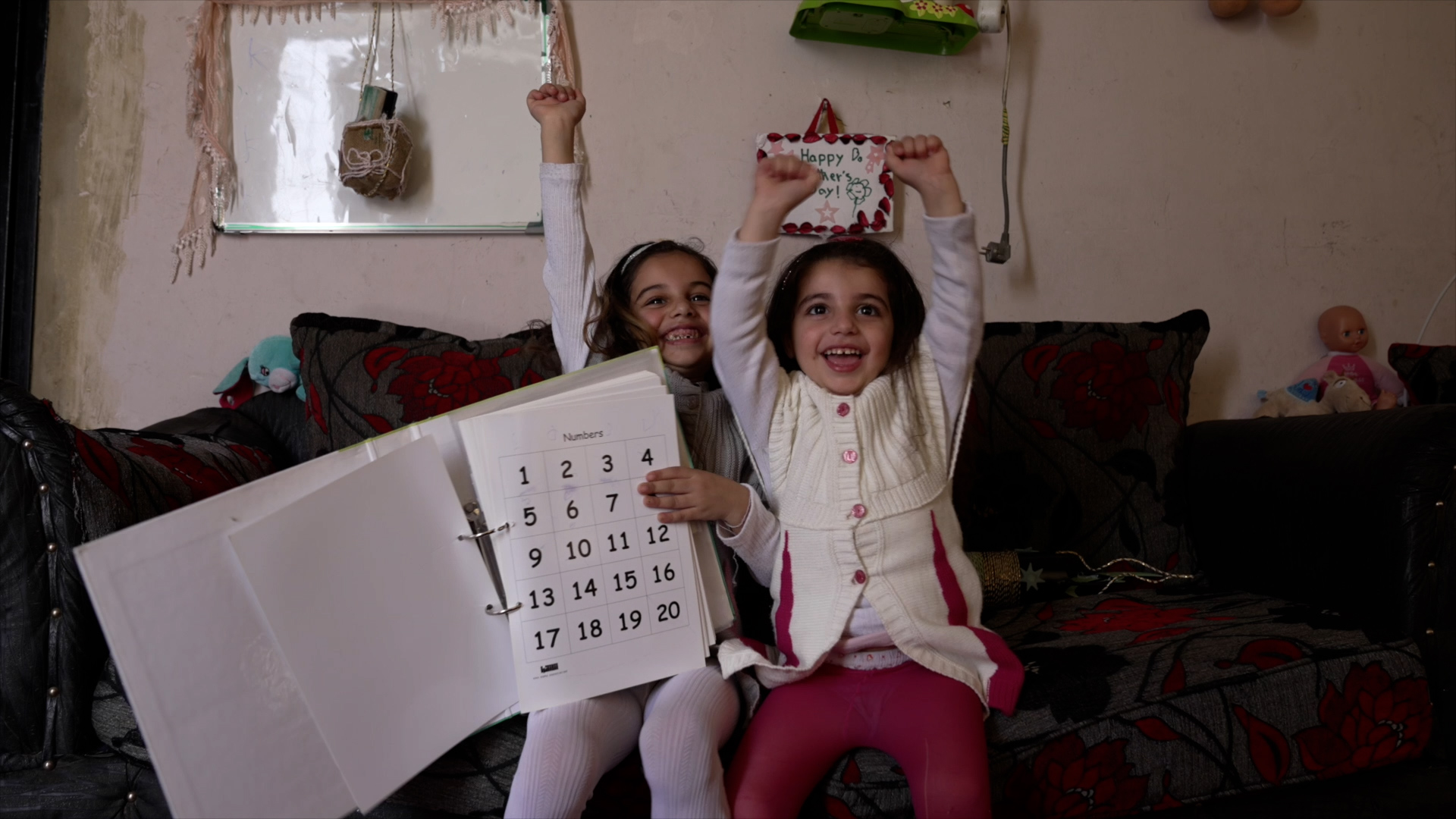India: Bikes to stop dropouts
A programme in Bihar state provided a bicycle to every girl entering grade 9 or 10 to reduce their dropout rates.
Time is running out. For the one in six children who are out of school around the world. And for the children yet to start school or at risk of dropping out.
On current trends, the out-of-school figure will still be the same in 2030. The year when all children are supposed to have access to a quality education, according to the Sustainable Development Goals set by international leaders.
Theirworld’s #WriteTheWrong campaign aims to grow awareness of the global education crisis. A dramatic increase in funding is needed – and last week Their News spotlighted the crucial role of the Education Cannot Wait fund and the International Finance Facility for Education in addressing that problem.
But even with their help, many countries still need to do more to ensure all children are in school and learning – with only 60% of children in poorer countries completing primary school.
Theirworld campaigns for national governments to contribute 4% to 6% of their gross domestic product to education and to spend 10% of their education budgets on early childhood education.
This week we’re looking at what individual countries are doing to invest in education, to improve their school systems and to get more children into early childhood education. That ranges from bicycles to help girls get to school to programmes aimed at reaching excluded and marginalised children.
“We see encouraging improvements in access to quality education and health care, to water and sanitation and to affordable clean energy,” said United Nations Secretary-General Antonio Guterres last week at the High-Level Political Forum – the UN platform for examining progress on the global goals.
He added: “But we continue to struggle to reach those furthest behind, particularly groups such as adolescent girls and persons with disabilities.”
For the forum, held in New York, a special report was produced called Beyond Commitments: How Countries Implement SDG4. Nations were asked to carry out voluntary reviews and report back on their progress towards achieving Sustainable Development Goal 4 – quality education and lifelong learning for all.
Information was supplied by 72 countries. Just under a third said they are carrying out wide-ranging curriculum reforms, while 20% referred to partnerships linking the education system with the labour market.
But only Benin, Bhutan and Jamaica specifically mentioned how they are reaching the children left furthest behind first.
Here we look at some of the progress reported by countries.
90% of brain development happens in the first five years of a child’s life. So early childhood development is crucial if children are to fulfil their potential and succeed at school and beyond.
Brazil’s Happy Child programme was launched in 2016 to expand the well-known Bolsa Familia (Family Allowance) social assistance programme, which supports women from early pregnancy to ensure early childhood development.
Over 2,500 municipalities have joined and more than 600,000 children are benefiting, with the aim to reach one million children.
In 2017, the government established an early childhood committee with ministry and civil society representatives from the health, education, culture, planning and development sectors.
A programme in Bihar state provided a bicycle to every girl entering grade 9 or 10 to reduce their dropout rates.
The Takaful (Solidarity) programme, started in 2015, provides a monthly cash transfer to households whose children attend school at least 80% of the time.
Last year almost 2.3 million families were enrolled, more than tripling the rate from 2015-16.
The Egypt ICT Trust Fund, the Ministry of Communications and Information Technology and the United Nations Development Programme implemented education and training programmes that target people with disabilities in 112 slums in Cairo.
The country’s 2010 Education Law sought to revolutionise the education system and ensure it is inclusive, multilingual and intercultural, and takes a lifelong learning approach.
A 2016-20 strategic plan uses a range of education programmes to target historically excluded groups, such as indigenous populations, people with disabilities, those living in rural and remote areas, street children and pregnant teenagers who drop out of school.
One example is the Juancito Pinto school voucher, which helps poor children to stay in school by offsetting transport, books and uniform costs.
The North African nation aims to push pre-primary education into the mainstream - by improving the training and knowledge of teachers and designing school buildings in harmony with their surroundings.
The Southeast Asian country views education as the top national priority and allocates 20% of its budget to education and training.
Despite progress, a 2015 analysis showed that poverty among ethnic minorities was over three times the national average – leading to early marriage for girls, poor education access and fewer livelihood options.
Lack of infrastructure and facilities, especially in remote areas, was a key challenge.
So the objectives of Vietnam’s 2030 education sector plan include gender equality and support for vulnerable groups, such as ethnic minorities, people with disabilities, children in remote areas and the poor.
Five-year-olds in poorer areas don’t pay tuition fees and get free school meals.
To fulfil the commitment made in its education law, Honduras wanted to ensure every five-year-old is enrolled in formal school or non-formal alternatives, such as community centres offering pre-basic education.
In response to limited progress in reaching the last 10% of out-of-school children and youth, the Equitable Education Fund was set up in 2018
Its 10-year goal is to help Thailand achieve SDG4 by 2030 by improving the school readiness of pre-school children, reducing out-of-school and dropout rates and improving teachers and schools for the poorest children.
The fund targets 4.3 million children and youth. In 2018, it developed a poverty-screening programme that allows schools to apply for conditional cash transfers for students aged three to 15 from poor families.
This year, it is providing the Homegrown Teacher Scholarship for poor secondary school students who want to become teachers in schools in their disadvantaged communities.
The country's early childhood care and education policy has undergone significant revision and expansion. An inter-sectoral commission aims to improve access to quality early childhood services. The number of child beneficiaries rose from 570,000 to 1.3 million between 2010 and 2018.
The school feeding programme is a key initiative to increase school retention, especially in semiarid regions and slums.
In 2009, the government launched Home-Grown School Meals to gradually take over a project run with the World Food Programme for the previous 40 years.
The handover was completed in 2018 and the government’s 2018-19 budget set aside $24 million for school meals.
Kenya also has a focus on educating children from nomadic groups.
It became the first Latin American country to ensure full electric power in all schools. The education ministry launched a student support programme for pregnant girls to help keep them in school.
The Beyond Commitments document was compiled by the Global Education Monitoring Report (GEM). Separate from that, the GEM team wrote a blog that examined how Ethiopia is making the fastest progress in sub-Saharan Africa on children completing primary school.
It said: “Ethiopia, like many countries in the region, has seen its education system expand quickly over recent years. It has gone from 10 million learners a decade ago to more than 25 million learners today.
“Despite this vast expansion, the completion rates at the primary school level projected to 2030 are the fastest in the region. It will have gone from only three in 10 children completing primary education in 2000 to 8 in 10 completing in 2030. Along with India, it will be topping the list of countries to have reduced their out-of-school numbers the most in relative terms.”
The GEM team points out that Ethiopia dedicates 27% of its entire budget to education – the second highest rate of any country in the world. But it says the way that money – and international aid – is being spent, along with targeting rural areas and girls, is key to its success.
Pictures: United Nations, UNICEF, GEM Report, Global Partnership for Education, Takaful, Tuan Nguyen.

